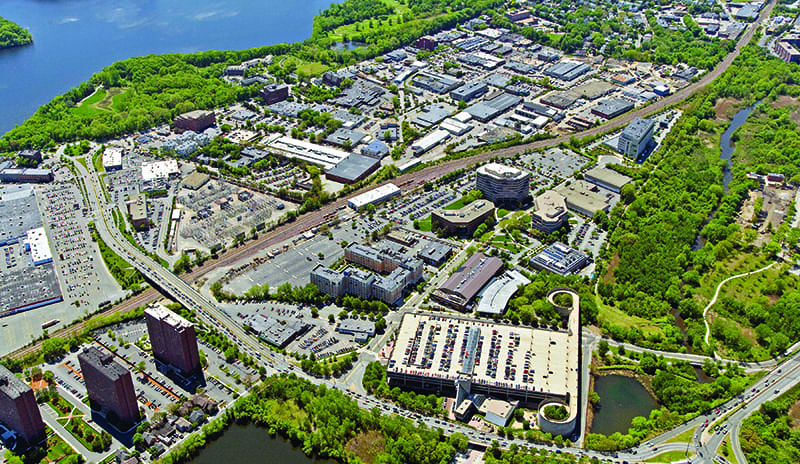– by Rafael Montero Gosálbez –
INTRODUCTION
The origin of Science and Technology Parks must be sought in two American experiences, Silicon Valley and Route 128 in Boston (Castells et al., 1994), examples that have essentially two things in common, an initial university core (Stanford and MIT) and the development of research projects with financial support from Government, at the pace of military conflicts.
First Parks were conceived measuring their success by square meters of facilities. Nevertheless, this dynamic has been replaced today, focusing on their ability to create synergies and innovate.
Features completing their design (Castells et al., 1994. Ondategui, 2001) are the presence of powerful informal social networks and venture capital firms, altogether with a local culture based on hard working, competition, individualism and reference models of economic success. Other features needed to develop successful parks are:
- Localization in “dense urban environments” or metropolises, the genuine innovation centers (Castells et al., 1994, Ondategui, 2002, Vegara and De Las Rivas, 2004).
- Public authorities have an important role in their design, implementation and promotion, and universities are key stakeholders for success.
- Opting for one of three objectives: re-industrialization, regional development or creation of an “innovative environment”.
- Real estate development of facilities is not enough.
- Long-term developments.
- Need for IP policies where economic benefits are shared between university and researchers.
- Need for advanced services and quality infrastructure, supply of rental housing and offices, leisure, catering, sports, etc.
THE BEGINNINGS IN SPAIN
In Spain, the experience related to Parks begins in the 80s with the impulse of regional governments.
In 1989 the Association of Science and Technology Parks of Spain, APTE, is created, gathering Parks and projects in advanced stage of development (Apte, 2004). In 1992 Felipe Romera summarized the Technological Park of Andalusia with a target, re-industrialization of Malaga and some characteristics: quality physical environment, protected from speculation, an industrial park, a business park, an area of R&D, a services center and a place for technology transfer.
GROWTH
After 1992 regional governments implemented more initiatives (Ondategui, 2002).
The evolution of Spanish parks in the 90s starts the change from mere real estate projects to the consideration of innovation in its design. Awareness has been raised on innovation, which is pursued by attracting ICT companies and with collaboration between institutions and companies, technology transfer and diversification. In 1997 Spain had 11 developed Parks and 5 in the pipeline (Ondategui, 2001).
EXPANSION
In 1998 an expansion phase begins (Apte, 2004), thanks to the direct involvement of universities. In 2000 we found 14 Parks in operation and 5 in the pipeline (Ondategui, 2001).
The impulse by universities encouraged the development of 21 parks 42 universities are involved in projects with Parks, with support from regional and local governments.
New facilities are smaller, leaving the real estate logic and focusing on generating innovation. APTE reaches 51 partners in 2004, while the Ministry of Science and Technology launches specific funds for Parks (Apte, 2004).
Talking about reasons that firms found to join a Park, Ondategui (2002) emphasizes the prestige that comes with the environment, facilities, access to technology and communications, advanced services and incubation, proximity to universities, existence of enterprise networks, possibility to engage in institutional relationships and the ease of openness to international markets.
Regarding the importance of innovation in Spanish parks, consistently with its initial conception of an instrument of regional development, until mid-90s universities were not active members, when the parks began to implement attraction strategies (not integration) of universities, by creating Transfer Offices and developing of projects financed by ERDF Fund (Ondategui, 2002).
At the late 90s, 24 Spanish universities were involved in parks. In 2002, 40 universities were collaborating with members of APTE and 73% of firms in parks collaborated with the university (Ondategui, 2001).
In line with this late connection between universities and Parks, Ondategui (2002) found that the phenomenon of university spin-off was not being produced in Spain, given the lack of leadership of universities and venture capital financing.
As for the potential development of parks, Ondategui (2002) stressed the need for specialization in selected key activities such as health, environment, biotechnology, new materials and ICT.
CURRENT STATUS OF THIS ISSUE
The growth of these frames during the first decade of the century has been so intense that we find the figure of 83 parks in 2012 in different stages of development.
In order to analyze the issue beyond the mere extension of the figure, all existing parks in Eastern Regions of Spain have been examined. From the analysis, the following conclusions can be drawn:
- Parks located in metropolitan areas are the physical environment of the Third Industrial Revolution.
- This expansion shows the trend of providing midsize cities with universities, research centers and structures able to promote innovation (Ondategui, 2001).
- The engagement of universities has grown and reaches the design of parks.
- The potential of the metropolitan area of Barcelona and its province, has been confirmed by the highest concentration of these facilities in the studied region (with 17 parks). These figures confirm the theory stating that the true innovative areas are the metropolises. We see this potential compared to other studied territories:
Source: prepared by author
Distribution of Parks by Regions:
Table 2. PARKS BY REGION
Source: prepared by author
- Parks look for attracting TBCs (technology-based companies) and generating spin-off, over other forms of entrepreneurship. Value-added services are introduced; support from regional administrations, business associations, foundations or other private entities, is often requested to their maintenance.
- Trend to include from the beginning university, technology transfer and quality of infrastructure (Ondategui, 2001) is consolidated, also trying to create a culture of innovation, synergizing with the environment and providing management services and business advice.
- Parks have developed systems for attracting private investors: Business Angels, Family Offices, Private Equity, participative loans, etc.
- It is possible to differentiate between Parks that have been developed or born specialized and others with a generalist profile, relatively open to any innovative activity. Among the specialized parks, it is stressed the existence of two large groups, food and health approaches.
- In 2011 (Apte, 2011) three main sectors have been identified: ICT and computing; engineering, consulting and advanced services; and health-related activities. Activities related to ICTs have been held since the very beginning, weighing regularly since 2002 between 23% and 28% of total activities. Engineering and consulting are placed from the beginning between 12% and 16% of total activities.
- The number of companies housed in Spanish parks has increased from 500 in 1997 to 6,030 in 2011. The following table summarizes the percetage of growth over the last years; as it will be shown, there is a significant increase during the economic crisis:
Table 3. INTERANNUAL GROWTH. COMPANIES HOUSED IN SPANISH SCIENCE
Source: Apte (2002 a 2008) and author
CONCLUSIONS
In the last decade we have witnessed a huge development of Science and Technology Parks, who might have been influenced by the real estate whirlwind, which has increased research and ICT infrastructures in Spain.
Now that we are in a recessive phase of the economy, it should be highlighted that developed economies cannot compete with the rest except for innovation (Castells et al., 1994).
Extracted and adapted from a paper entitled “Los Parques Científicos y Tecnológicos Españoles. Modelo de implantación en el Mediterráneo Español” originally published at No. 113 COITIA Journal, pg. 20-29. ISSN 1696-9200.
 Lawyer and Certified Project Manager (PMP®) with vast experience in the public and private sector in City Management, Urban Planning, Real Estate, Administrative Law and Public Services. He holds a Master in Urban Planning and a Master in Business Administration. He is also an expert in Public Leadership.
Lawyer and Certified Project Manager (PMP®) with vast experience in the public and private sector in City Management, Urban Planning, Real Estate, Administrative Law and Public Services. He holds a Master in Urban Planning and a Master in Business Administration. He is also an expert in Public Leadership.
He has taught land and housing policy and public enterprise management in business schools and has been member of the Executive Committee of the Spanish Association of Public Developers of Land and Housing.
He writes in the legal blog www.abogadosdealicante.info and occasionally in local Spanish newspapers journals and magazines. Twitter: @RafaMontero






